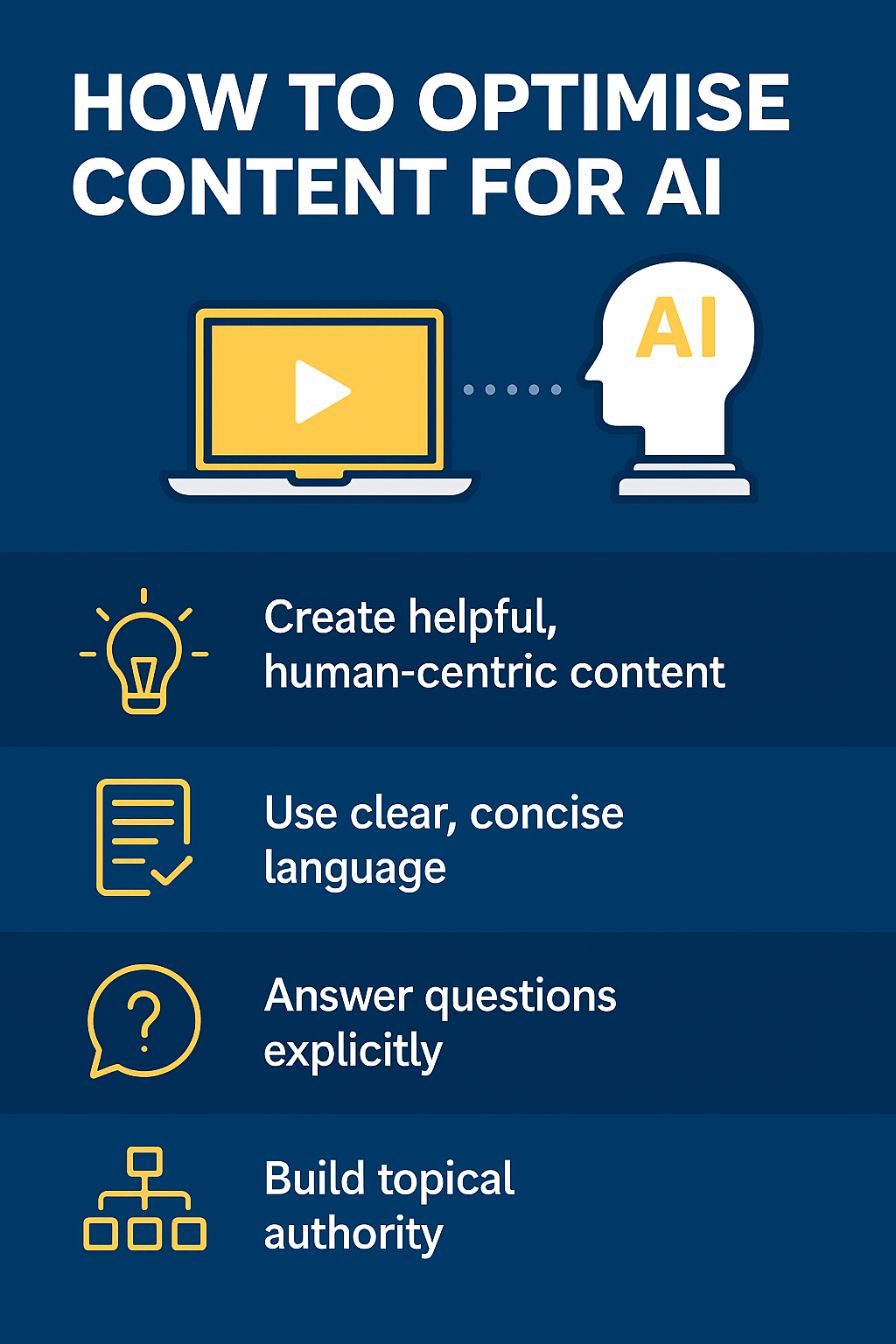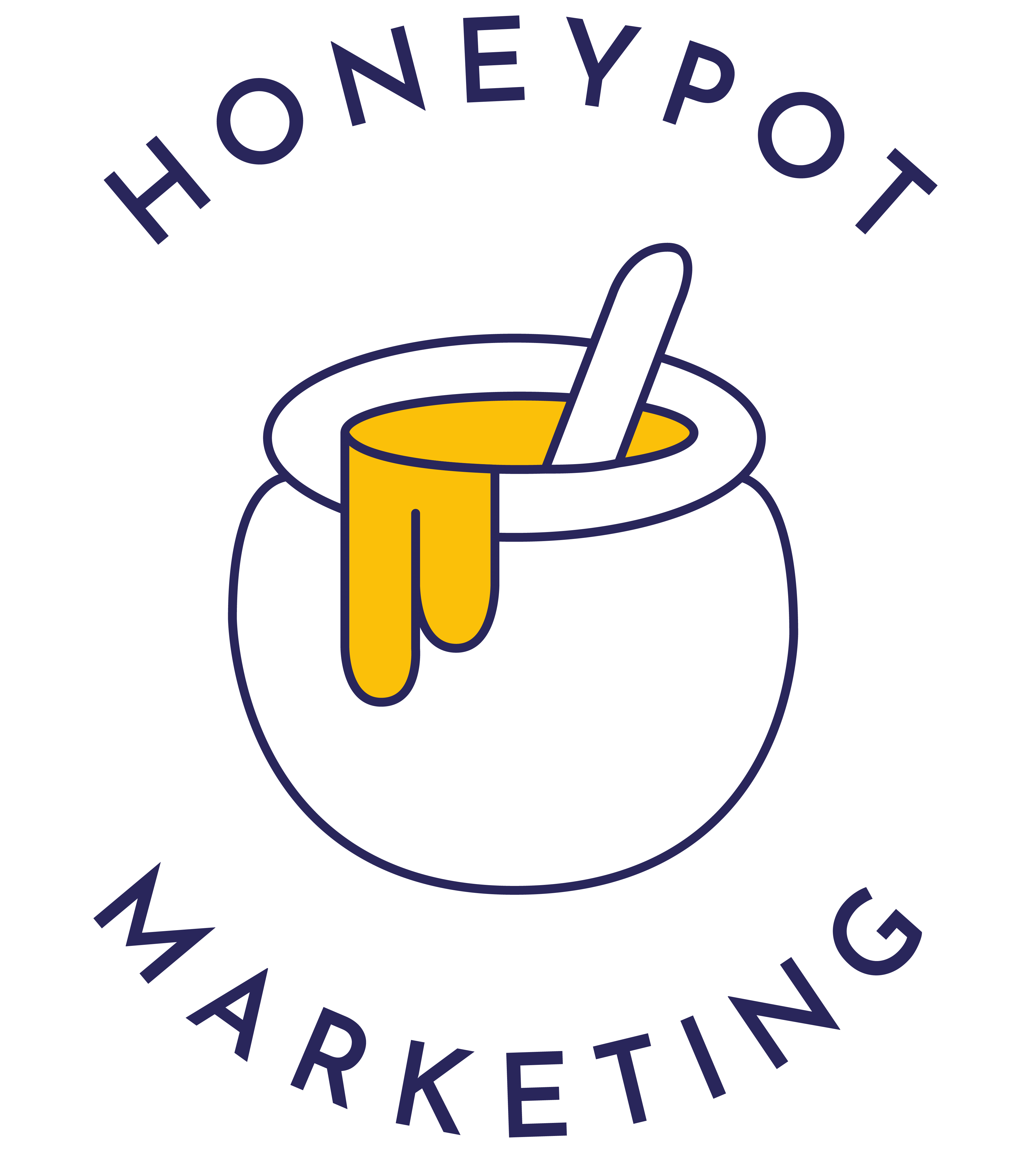
AI is changing the way people find and consume content. From Google’s Search Generative Experience (SGE) to voice assistants and chatbots, artificial intelligence is now the gatekeeper between your content and your audience. If your site isn’t optimised for AI, you’ll be left out of the conversation—literally.
In this guide, we’ll explore what AI optimisation really means, why it matters and how you can future-proof your content strategy for an AI-first world.
What Does “Optimising for AI” Mean?
Traditionally, SEO was about making your content accessible to search engine bots and appealing to human users. Now, you also have to think about how artificial intelligence interprets, summarises and surfaces your content.
Optimising for AI means creating content that:
- Is understandable by machine learning models
- Can be selected for AI-generated answers (like Google SGE or Bing Copilot)
- Supports zero-click search behaviour
- Reinforces topical authority and clarity
In short: you’re optimising for humans, bots and algorithms that create responses on behalf of both.
Why AI Optimisation Matters
- Google SGE is changing the SERP – Users may never see your website. AI-generated answers pull summaries and citations from top-ranking content.
- Voice search and virtual assistants rely heavily on structured, concise information.
- Content saturation means you need to stand out. Clarity, authority and machine-readable structure helps.
- Zero-click search is on the rise – You need to rank and be featured.
In short: content that’s optimised for AI gets surfaced more, clicked more (when available) and trusted more.

How to Optimise Your Content for AI: A Step-by-Step Guide
1. Create Helpful, Human-Centric Content
AI rewards useful content. That means:
- Answer real questions fully
- Include examples, FAQs and supporting detail
- Focus on one clear intent per piece (e.g., informational, transactional, etc.)
Google’s Helpful Content System is designed to prioritise people-first content—this benefits both traditional and AI-driven results.
2. Use Clear Language AI models like:
- Short sentences
- Clear headings (H1, H2, H3)
- Structured lists and bullet points
- Defined sections with subtopics
Avoid fluff, buzzwords or vague language. Clarity helps AI understand what your content is about—and choose it for summarisation.
3. Answer Questions Directly
AI tools often pull content that answers a question directly. To improve your chances:
- Use question-based H2s and H3s
- Provide short answers followed by supporting detail
- Include “People Also Ask” style sections
- Use tools like AlsoAsked or AnswerThePublic to find real questions
4. Optimise for Snippets and Featured Results
To be in AI-generated summaries, optimise like you’re targeting a featured snippet:
- Include definitions, step-by-step processes or “what is…” explanations
- Use schema markup (FAQ, How-To, Article)
- Keep intros tight and focused
- Use tables, bullet lists and numbered steps
5. Improve E-E-A-T (Experience, Expertise, Authority, Trust)
AI models don’t just value keywords—they look for credibility signals:
- Include author bios and credentials
- Link to authoritative sources
- Show evidence of expertise (case studies, testimonials, awards)
- Keep your site technically healthy (SSL, accessibility, fast load times)
6. Use Structured Data (Schema Markup)
Adding schema helps search engines and AI models understand your content’s structure and purpose. Prioritise:
FAQPageHowToArticleAuthorOrganizationLocalBusiness(if relevant)
Tools like Google’s Structured Data Markup Helper or Schema.org are your friends here.
7. Build Topical Authority
AI models favour sites that consistently publish high-quality content on specific topics. To build this:
- Group content into topic clusters
- Use internal linking to reinforce connections
- Cover related subtopics in depth
- Avoid jumping across unrelated topics
8. Optimise for Zero-Click Search
Even if users don’t click, your brand can still show up in:
- AI summaries
- Featured snippets
- Rich results
- Knowledge panels
- Voice assistant answersAccept zero-click—and use it to build brand awareness, not traffic.
AI Optimisation vs. Traditional SEO: What’s the difference?
| SEO Element | Traditional SEO | AI Optimisation |
|---|---|---|
| Keywords | Broad matching | Intent-based phrasing |
| Format | Long-form articles | Scannable, structured info |
| Goal | Rank in search results | Be surfaced in summaries |
| Output Style | Human-readability | Machine + human readability |
| Content Depth | Competitive research | Topic clarity & usefulness |
Conclusion: Write for humans. Structure for machines.
AI isn’t replacing content. It’s just changing how content is found, filtered and surfaced. The future of search is about clear, helpful, structured and credible content.
By optimising for AI today you’re not only improving your current rankings—you’re preparing for how people will search tomorrow.
STAY CONNECTED
Contact Us
Tell us about your brand. We want to discover your vision and how we can support you in getting there with SEO content creation.
Send Us Message
